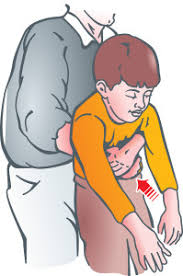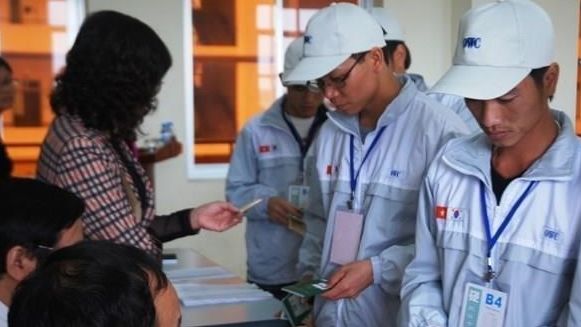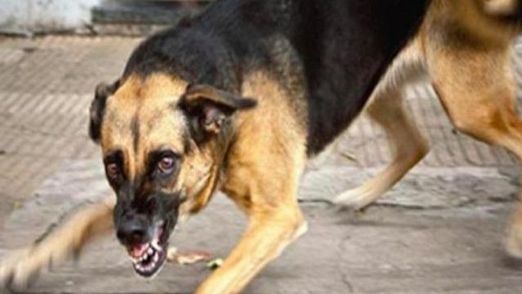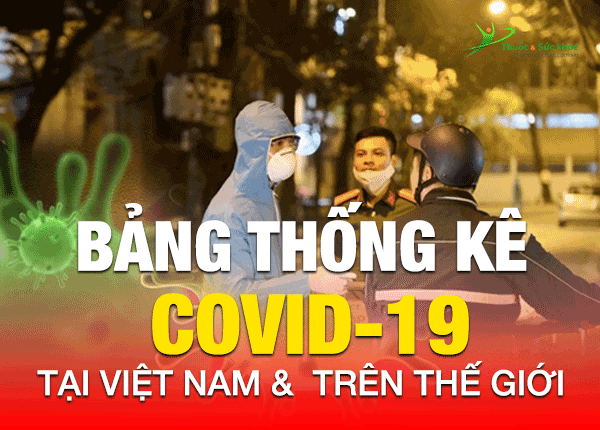Choking

His parents said that when the 2 brothers where playing without supervision, GB suddenly hears screaming for no reason and panic. His brother said that GB put something in his mouth. The family quickly brought him into the hospital.At the Phu Tho Children Hospital, the doctors have co-operated with surgeons of Phu Tho to conduct an endoscope to pull the object out of the patient throat.
According to Prof.Dr Nguyen Duc Long, Head of Emergency of Childcare Centre, choking hazard is a common household accident especially for children. Choking hazard lethality rate is especially high for children under 6 years old. Lethal symptoms are mainly suffocation and infection.
There are many causes for choking hazard, for children it's usually due to items like small toys and round food such as jelly beans, nuts, seeds, coins, lego bricks. Those who eat and play at the same time also are likely to choke.
Dr Long said that the easiest signs of choking is when the child cough madly, panting, unable to make sound from throat, not breathing, fainting, spinning eyes, pale and blue lips.... Correct emergency procedures are mandatory for success in saving choking hazard patients. Parents should be aware and supervise children carefully and prepare themselves with the SOS procedure should the situation arise.
Procedures when child is choking:
Back patting and chest pressing: for toddlers under 1 years old
Carefully position him face-up on one forearm, cradling the back of his head with that hand.Place the other hand and forearm on his front. He is now sandwiched between your forearms.
Use your thumb and fingers to hold his jaw and turn him over so that he's facedown along your forearm. Lower your arm onto your thigh so that the baby's head is lower than his chest.
Using the heel of your hand, deliver five firm and distinct back blows between the baby's shoulder blades to try to dislodge the object. Maintain support of his head and neck by firmly holding his jaw between your thumb and forefinger.
If the object does not come out, place your free hand (the one that had been delivering the back blows) on the back of the baby's head with your arm along his spine. Carefully turn him over while keeping your other hand and forearm on his front.
Then do chest thrusts
Use your thumb and fingers to hold the baby's jaw while sandwiching him between your forearms to support his head and neck. Lower your arm that is supporting his back onto your thigh, still keeping the baby's head lower than the rest of his body.
Place the pads of two or three fingers in the center of the baby's chest, just below an imaginary line running between his nipples. To do a chest thrust, push straight down on the chest about 1 1/2 inches. Then allow the chest to come back to its normal position.
Do five chest thrusts. Keep your fingers in contact with the baby's breastbone. The chest thrusts should be smooth, not jerky.
Repeat back blows and chest thrusts
Continue alternating five back blows and five chest thrusts until the object is forced out or the baby starts to cough forcefully, cry, breathe, or becomes unresponsive. If he's coughing, let him try to cough up the object.
Back blows and abdominal thrust: For children age 1 - 8
First do back blows
Stand or kneel slightly behind him. Provide support by placing one arm diagonally across his chest and lean him forward.
Firmly strike the child between the shoulder blades with the heel of your other hand. Each back blow should be a separate and distinct attempt to dislodge the obstruction.
Give five of these back blows.
Then do abdominal thrusts
Stand with one foot in front of the other, or kneel behind the child, and wrap your arms around his waist.
Locate his belly button with one or two fingers. Make a fist with the other hand and place the thumb side against the middle of the child's abdomen, just above the navel and well below the lower tip of his breastbone. Grab your fist with your other hand and give five quick, upward thrusts into the abdomen. Each abdominal thrust should be a separate and distinct attempt to dislodge the obstruction.
Repeat back blows and abdominal thrusts
Continue alternating five back blows and five abdominal thrusts until the object is forced out or the child starts to cough forcefully, speak, cry, breathe, or becomes unresponsive. If he's coughing, encourage him to cough up the object.
Continuous reading
Korean language test for Vietnamese guest workers to be launched online

Baby & mom - 17/03/2020
Korean language test for Vietnamese guest workers to be launched online
COVID-19 changes nature of learning and teaching for good

Baby & mom - 17/03/2020
COVID-19 changes nature of learning and teaching for good
E-learning in HCMC developing without synchronous guidance

Baby & mom - 17/03/2020
E-learning in HCMC developing without synchronous guidance
Young boy have 70 stitches because of dog bite

Baby & mom - 30/10/2019
Young boy have 70 stitches because of dog bite




